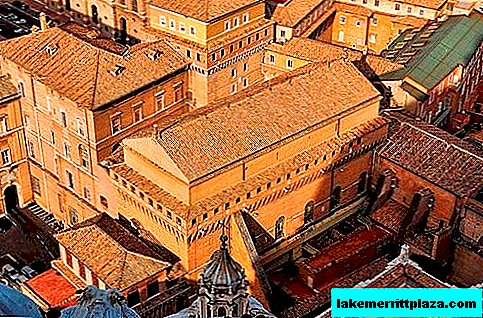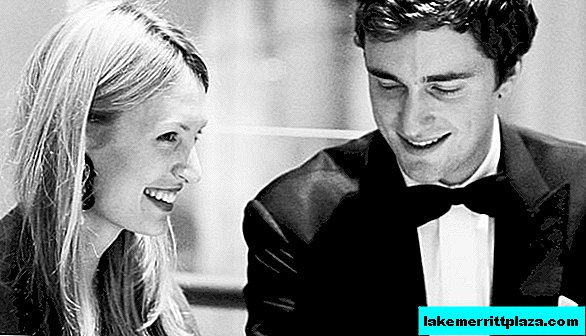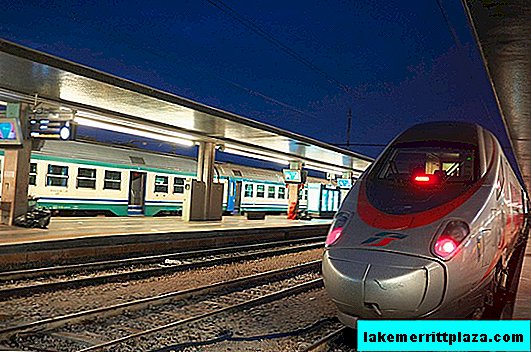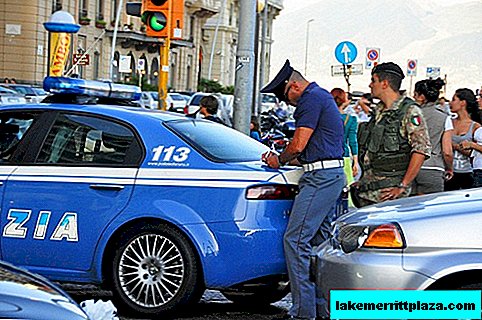At BlogoItaliano, we repeatedly talked about the Sistine Chapel in the Vatican and its significance for world culture. There is a good reason for a new story. At the end of 2014, the Capella hosted the presentation of the LED lighting system, thanks to which visitors will be able to see the Renaissance masterpieces in the literal sense of the word in a new perspective. Therefore, we decided to return to the Sistine Chapel and also look at it in a new way.
The Sistine Chapel, like many other buildings in Rome, appeared thanks to Pope Sixtus IV (Francesco della Rover).
Sistine Chapel in the Vatican: initial view
The prototype for its construction in 1473-81, or rather, the reconstruction that existed from the end of the XIV century. the chapels of the Apostolic Palace, served as ancient temples, including the famous Temple of Solomon. The author of the project was Bartolomeo Pontelli, who at that time was one of the leading architects of Rome.

Sistine Chapel more reminiscent of a temple than a house chapel
In size The Sistine Chapel - 40.93 m long, 13.41 m wide and 20.70 m in height - it really looks more like a full-fledged temple than a house chapel. Botticelli, Ghirlandaio, Pinturicchio, Perugino and Rosselli, the best artists of the time, were involved in her paintings. The invitation to the Vatican of eminent Florentine painters also had a political context: after the Pazzi conspiracy of 1478, the pope wanted to come to terms with the Medici.
The basement level was decorated with murals imitating tapestry draperies. The south wall illustrates the Old Testament story of Moses, the north - scenes from the New Testament. The murals above the entrance to the Sistine Chapel depicted the final episodes - "The Debate about the Body of Moses" and "Resurrection" (lost in 1522 and rewritten in the 70s of the 16th century).
The altar wall was given to the plots "Finding Moses" and "Christmas", which Perugino worked on. These murals were destroyed in the 30s. XVI century. And now in their place is the Last Judgment of Michelangelo.

The best artists of the Renaissance participated in the painting of the chapel
Despite the fact that different artists worked in the chapel, all the frescoes created by 1482 were designed in the same style typical of temple murals: multi-figure, traditional color and compositional solutions, plenty of gilding.
Images of holy popes were placed above the plot frescoes, and the ceiling was a dark blue tent with gold stars, symbolizing the vault of heaven (the work of Piermatteo d'Amelia).
It is possible that Sistine Chapel in the Vatican it would have remained a valuable, but generally ordinary monument for Italy, if Pope Julius II had not taken up its reconstruction, he is also Giuliano della Rovere, nephew of Sixtus IV.
Michelangelo and 57 episodes of the High Renaissance
Reconstruction of a relatively new chapel was required for completely utilitarian reasons. In 1504, during excavations in the Vatican, carried out before the construction of St. Peter's Basilica, the shaky soils of the Eternal City could not stand it, and the Sistine Chapel "swam".
Its southern wall tilted, and the ceiling was disfigured by a huge crack. The architect of the Cathedral of Bramante was able to stop the further destruction of the chapel, but the painting of the vaults was hopelessly damaged.
Michelangelo was invited to create new ceiling frescoes. It cannot be said that this order pleased him, all the more since he had almost no experience in fresco painting, but generous payment could soften his heart. In addition, Michelangelo took this work as a kind of challenge to him as a creator and inventor.

Fresco of Perugino's "Handover of the Keys" (1481-1482)
Throughout 1508-12 he created 57 frescoes. 9 large fragments located in the center of the vault from the entrance to the altar wall illustrate the Book of Genesis - from Creation to the Flood. They are grouped according to the triptych principle: the central episodes tell about the main events (the creation of Adam and Eve and the Exile), the side ones supplement the story.
The illusion of the relief of the murals is created by the complex play of light and shadow on the architectural elements of the vault, which depicts biblical scenes and individual figures of the sybil and prophets. To fully appreciate the skill of a genius, you need to constantly move around the hall, and not be at one point.
The reason for the appearance in the Catholic church of pagan and Old Testament subjects, and not, as originally planned, the figures of the Apostles, was the favor of Pope Julius II to the Renaissance idea of the continuity of the ancient and Christian worlds.

The Holy Prophet Zacharias is the father of John the Baptist.
Over the entrance to the Sistine Chapel, where the figure of Jesus was supposed to be, Michelangelo portrayed the prophet Zechariah. Wanting to avoid papal wrath, the master endowed the prophet with the features of Julius II and dressed in the mantle of flowers of the house della Rovere - blue and gold. But if you look closely at the figures of angels behind Zachariah’s shoulder, you can see how one of the kids shows the audience a cookie.
However, modern interpreters go even further and attribute to Michelangelo more scrupulous things, finding images of the reproductive organs of a man and a woman in the folds of robes on the fresco "Creation of the sun, moon and planets".
Sistine Chapel in the Vatican: The Last Judgment
The altar wall is a huge fresco of Michelangelo depicting The Last Judgment (1536-41 gg.). The plot is quite traditional for temple murals, but absolutely unusual in execution.
Medieval canons prescribed to emphasize the hierarchy of characters with a different scale of figures located strictly at different levels. The fresco of Michelangelo, which is famous for the Sistine Chapel, is extremely realistic in this respect: both sinners and righteous are equal in the face of the Lord.
Unusual and central figure of Christ, administering the Last Judgment. This is not a bearded almost old man with a haggard face, but a muscular, smooth-shaven young man who is about to stand up and with a gesture of his right hand will set in motion the whole host of souls.
The fresco is also given dynamism by the intense struggle of angels, literally tearing out saved souls, and devils, hurrying to overthrow vicious souls to hell.

The Last Judgment on the altar wall of the chapel
In the upper part of the Last Judgment, angels are depicted, traditionally carrying the instruments of the Passion of Christ - a column, a cross and a crown of thorns. However, to emphasize not the physical, but spiritual burden of these tools, Michelangelo portrayed the angels as wingless. Charon's boat carrying doomed to eternal torment (lower right corner of the fresco) is a tribute to Dante and his "Divine Comedy".
To hell in the image of Minos, to whom a serpent bites a genital organ, Michelangelo placed Biagio de Cesena, papal ceremonies of the master, indignant at the abundance of nudity. According to legend, Cesena turned for protection to Paul III, asking to destroy such a shameful image, but the pope also had a sense of humor, and the unfortunate ceremony master received the answer: "Hell is outside papal jurisdiction."
Nevertheless, already in 1555, by order of Paul IV, Daniele da Volterra properly covered shameful places, for which he received the nickname "portraiser".

"Creation of the lights" (may there be lights in the firmament of heaven ...)
There is a Last Judgment on the fresco and Michelangelo's alleged self-portrait, but also quite peculiar. At the left foot of Christ, Saint Bartholomew sits, holding a knife and stripped skin. The image of the saint depicts Pietro Aretino, who accused the master of heresy, which in those days was tantamount to a death sentence, and on the skin the features of the face of Michelangelo are guessed.
How to visit the Sistine Chapel
The Sistine Chapel is inspected in conjunction with the Vatican Museums and works with them on the same schedule. The ticket for visitors is also single. In more detail about all these nuances we wrote in the article Tickets to the Vatican: how to buy and visit all the most interesting.
Now we just note that the line at the box office of the Vatican Museums is the longest in Rome, and here it is quite possible stand 3-5 hours. Therefore, in order to save time and not waste it, it is better to purchase tickets in advance - via the Internet.
| Check schedule and availability of tickets ››› |
At the same time, you can purchase tickets separately, as well as a tour that includes the tickets themselves, and a tour of the Chapel, Museums and St. Peter's Basilica with a guide.
All descriptions and links are given below:
Useful links:
- Sistine Chapel and Vatican Museums: Things to Know
- Vatican Museums: what to visit first
- The most interesting excursions in the Vatican
Photos by: Leonard Cox, RasMarley, Rudy Chiarello, christusrex, SD P, richardwhitfield80, maxie-online.








